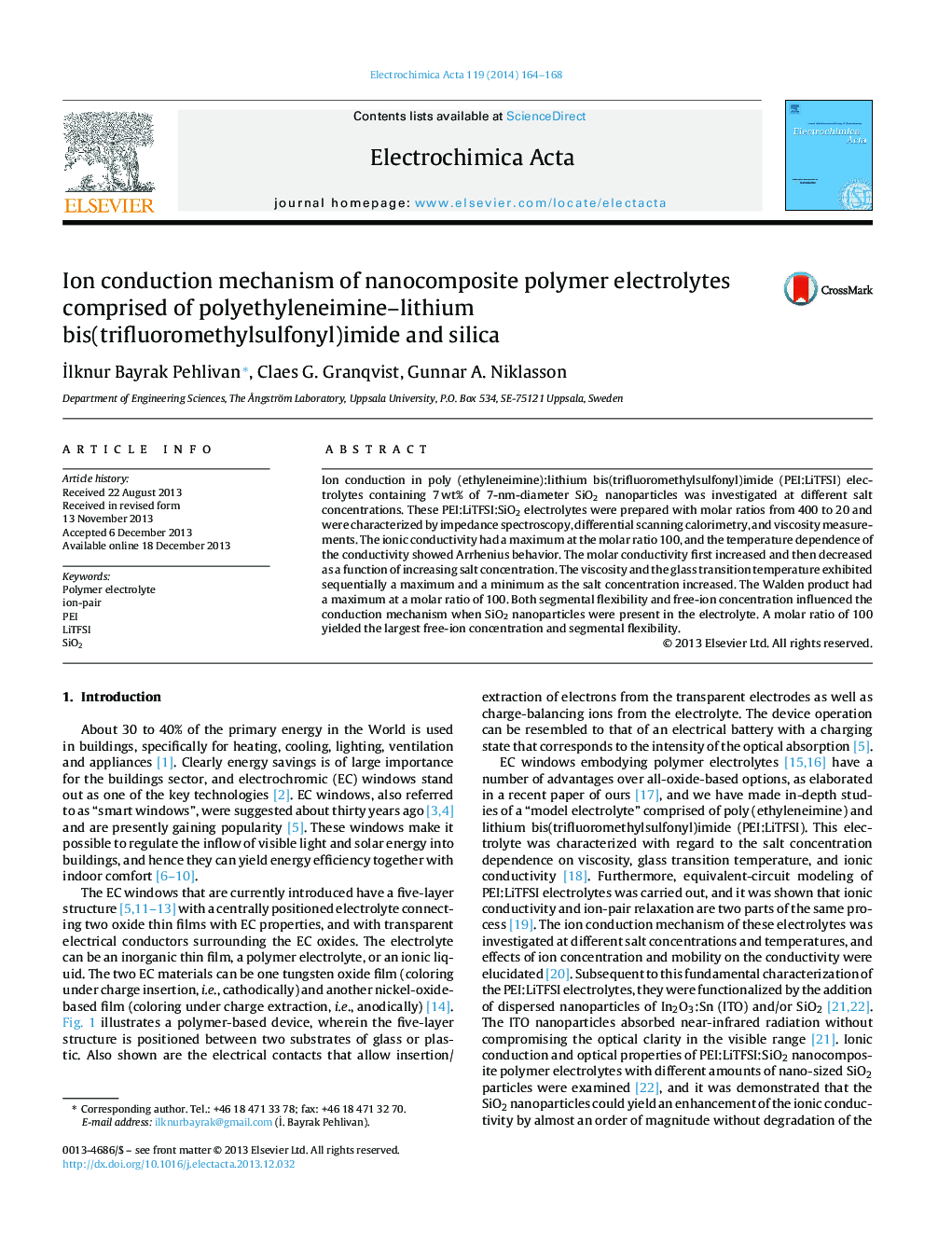| Article ID | Journal | Published Year | Pages | File Type |
|---|---|---|---|---|
| 186411 | Electrochimica Acta | 2014 | 5 Pages |
Ion conduction in poly (ethyleneimine):lithium bis(trifluoromethylsulfonyl)imide (PEI:LiTFSI) electrolytes containing 7 wt% of 7-nm-diameter SiO2 nanoparticles was investigated at different salt concentrations. These PEI:LiTFSI:SiO2 electrolytes were prepared with molar ratios from 400 to 20 and were characterized by impedance spectroscopy, differential scanning calorimetry, and viscosity measurements. The ionic conductivity had a maximum at the molar ratio 100, and the temperature dependence of the conductivity showed Arrhenius behavior. The molar conductivity first increased and then decreased as a function of increasing salt concentration. The viscosity and the glass transition temperature exhibited sequentially a maximum and a minimum as the salt concentration increased. The Walden product had a maximum at a molar ratio of 100. Both segmental flexibility and free-ion concentration influenced the conduction mechanism when SiO2 nanoparticles were present in the electrolyte. A molar ratio of 100 yielded the largest free-ion concentration and segmental flexibility.
